Chris Froome's favourite climbs
Procycling's guest editor picks nine climbs he loves to ride plus one he loves to hate
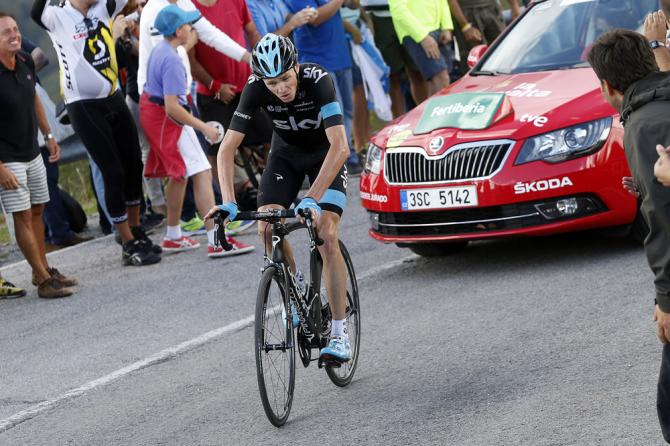
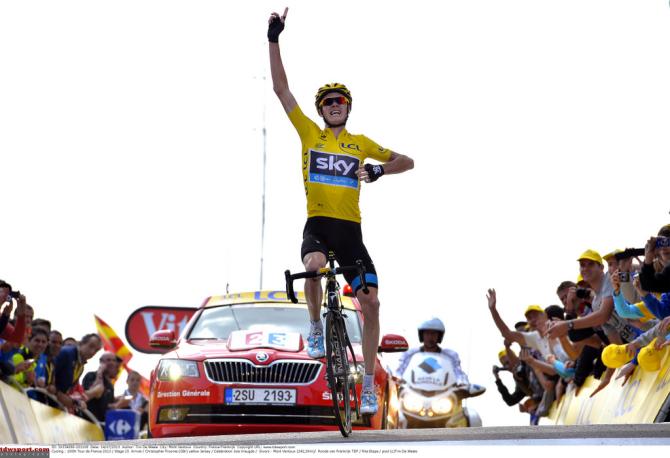
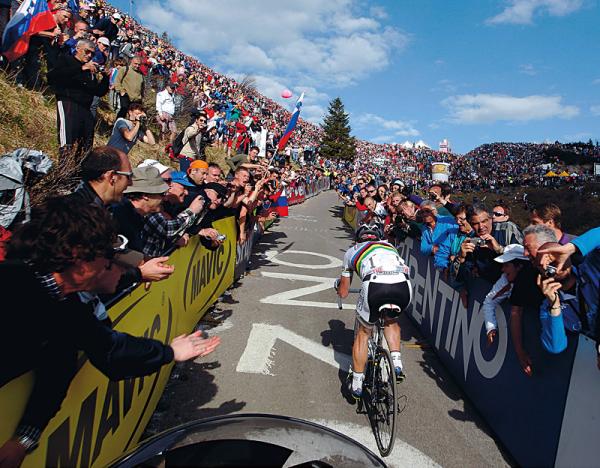
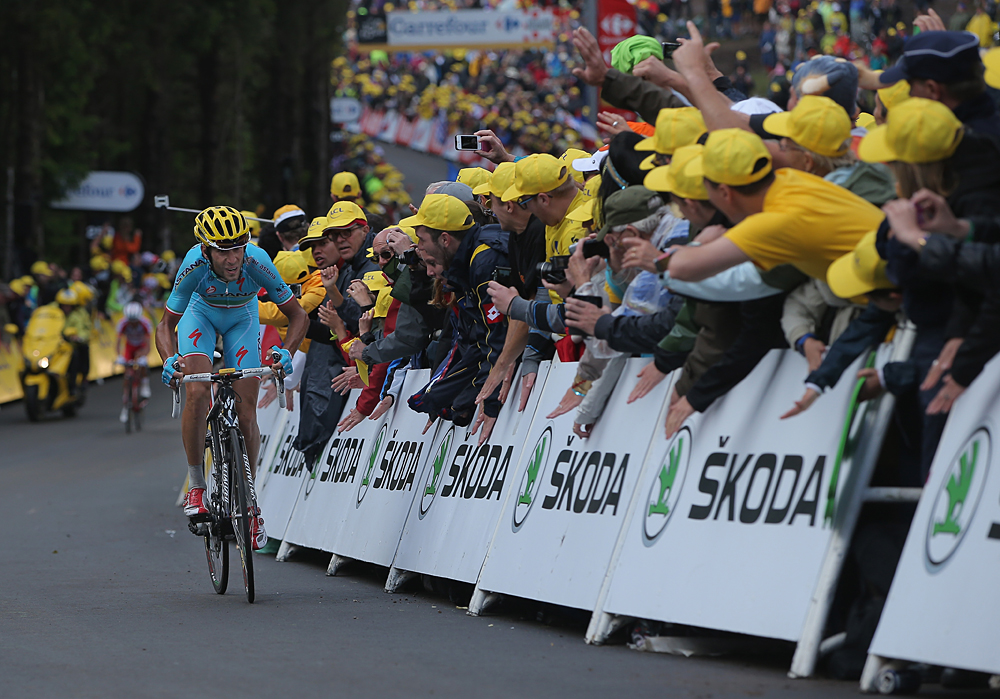
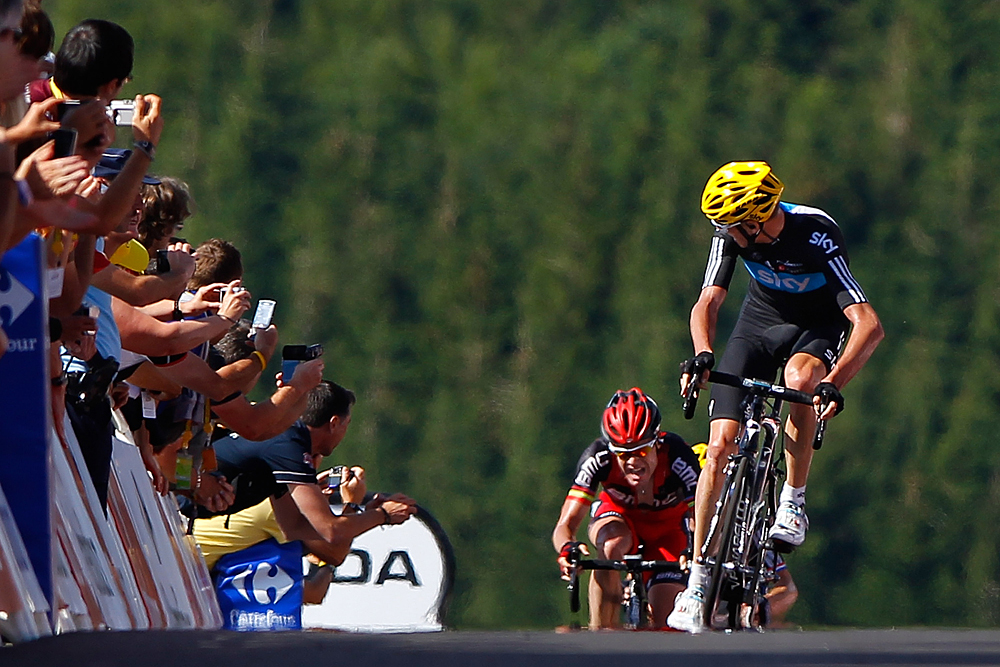
Originally published in the January 2017 edition of Procycling magazine.
Chris Froome, the four-time winner of the Tour de France, has taken over the Procycling editorial chair for a month and taken us inside his world. Procycling is available online in a digital edition and in all good news agents. Click the links for the digital edition or print edition subscriptions.
1. Col de la Madone: Length, 12.8km/average grade 7%
Like Monte Serra in Tuscany, Italy, and the Coll de Rates near Calpe, Spain, the Col de la Madone belongs to a subset of climbs whose cachet owes entirely to professional racers, but not to professional racing.
Tony Rominger of Switzerland, the four-time major tour winner, frequently referenced the Madone as his training climb of choice in the mid-90s. Those were the days long before Strava, Instagram, and Twitter, when whispers of top riders' exploits on the Madone or Monte Serra offered tantalising insights into their abilities and current form - and also the remote and exotic playgrounds where these were honed. For the most part they were roads that most fans would never ride or indeed ever see in photographs.
More than with Rominger, the Madone would eventually become synonymous with his controversial coach, Michele Ferrari, and with Ferrari's best-known protegé, Lance Armstrong. Armstrong moved to Cap Ferrat, between Nice and Monaco, in January 1998, ready to embark on his comeback from testicular cancer. On his first timed ascent of the Madone that spring, Armstrong clocked 36 minutes. Just over a year later, in the run-up to the 1999 Tour de France, he flew up the Madone in 30 minutes, 47 seconds. The rest - the seven Tour wins and their subsequent annulment for Armstrong's doping conviction - is heavily airbrushed history.
One of Armstrong's few lasting, undoctored, unashamed legacies in pro racing today is the Trek frame named after the Madone and ridden by the Wisconsin-based firm's eponymous WorldTour team. Armstrong has also bequeathed his complicated connection with the climb and, indirectly, anyone who rides it.
The dark shadows that Ferrari and Armstrong have cast across the Madone are not lost on Chris Froome. He acknowledged them thus in his autobiography, The Climb: "The Col de la Madone de Gorbio is a fallen woman. Her name is tainted by the sins of a former lover…The Col de la Madone had poor luck. That's the only way you can explain it when a mountain falls in with a bad crowd."
Get The Leadout Newsletter
The latest race content, interviews, features, reviews and expert buying guides, direct to your inbox!
Needless to say, by bettering Armstrong's PB by 38 seconds on the Madone, Froome has not succeeded in exorcising the American's ghost. If dot-joiners and cod scientists bridled at the unlike-for-unlike comparison of different riders on different days in different eras, they were even more appalled to discover that Richie Porte had scaled the Madone in 29:40 shortly before the 2014 Tour de France - over a minute quicker than Armstrong's low watermark and 29 seconds under Froome's.
What's certain is that the stopwatch wars and debate over what they mean have consolidated the Madone's status as the most famous climb in cycling that never appears in pro races. The Tour de France has never visited. Neither have the Tour Méditerranéen or Paris-Nice, although the latter did cause some confusion by premiering the nearby Col de la Madone d'Utelle in 2016.
The Madone de Gorbio does have much in common with Tour of the Med and Paris-Nice classics such as Mont Faron and the Col d'Èze. Like that pair, whether attacked from the best-known, eastern "Armstrong side" or the two routes starting in the west, the Madone soars through Aleppo and Maritime pines, limestone cliffs and 'garrigue' scrubland on a sumptuous natural balustrade overlooking the Riviera.
At 12 or 12.8 kilometres long, depending on whether your start point is an Intermarché supermarket on the D22 leaving Menton or a small stone bridge further up the road, the climb has found favour with many pros as a steadily rising, medium-length ascent without too many of the variables that can skew training data. The road is narrow, particularly on the descent down the west side towards Peille, and the traffic is scarce by Côte d'Azur standards.
At times, indeed, cars on the Madone can be outnumbered by professional cyclists converging from their homes in Nice and Monte Carlo. You can give a good girl or indeed climb a bad name, it seems, but not keep her down.
Froome says: "This is one of my favourite training climbs. Its pitch is fairly consistent, so it's ideal for training. It doesn't necessarily tell me anything I don't know right before the Tour, or whether I'm going to win. That said, I'll usually ride it in my last 10-day block before the Grand Départ. I'll do some kind of effort, either full-gas from the bottom to top or intervals. I'd love to see the Madone in the Tour one day. I don't agree that the descent would be too sketchy. I assume the main obstacle is the traffic in Menton at the bottom."
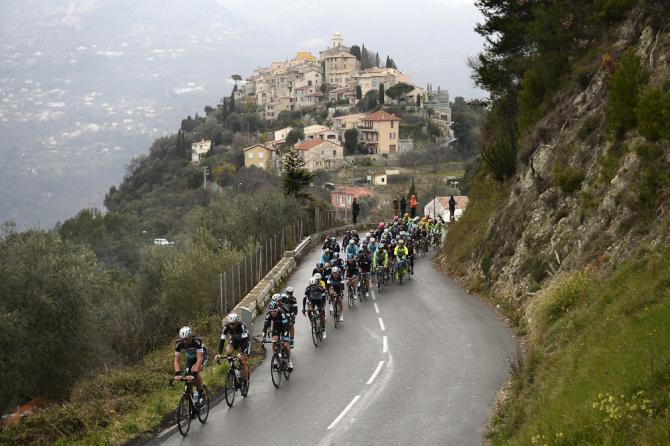
2. Col de Turini: Length 15km/Average Gradient 7.2%
Rather like the Col de la Madone, the Col de Turini has not needed the Tour de France to earn its place among pro sport's sacred places. The Grande Boucle has visited three times, in 1948, 1950 and 1973 but the Turini has become one of the world's more well-known and notorious mountain passes due to its association with another historic long-distance race in another sport, the Monte Carlo Rally.
Grand Tours have their queen stages, and the Monte Carlo Rally has its infamous "Nuit des Longs Couteaux" or "Night of the Long Knives," when the blare of engines fills the Vésubie and Bévéra valleys and the blades of their headlights slice across the mountains on either side of the Turini.
That the Col has not become a place of cycling pilgrimage is something of a mystery, given that it boasts three gorgeous ascents and access to a memorable summit loop. Of the three main routes to the pass, Chris Froome's favourite is the one whose base camp lies at Le Puey on the western side. From there, the climb measures just over 15 kilometres and rises steadily at an average gradient of 7.2 per cent. Both of the two south-north angles of attack, from Sospel and L'Escarene, are significantly longer at 24km and 30.2km respectively, somewhat more irregular in rhythm, but also less steep and so less challenging overall.
The real tour de force on the Turini, though, is that 12.8-kilometre noose accessed from the pass and wrapping itself around the Authion massif. This rough, pencil-thin extension road rises to 2,080m above sea level, takes in several notable military landmarks and offers peerless views in all directions, from the glistening waters of the Med in the south to the brooding peaks of the Mercantour looking north.
Froome says: "Unfortunately I have never been able to watch the Monte Carlo Rally live, though I would love to one day. If you ever get a chance to ride the Turini, I would really recommend the summit loop. Just be aware that it might be under snow if you're up there any time before late spring. Richie Porte and I went up there in March 2014 and nearly had to call for a couple of snowboards to get down."
3. Col Saint Roch: Length 25.1km/Average Gradient 3.4%
Should the Authion and the Turini not provide enough of a feast for the eyes and legs, further delicacies lie only a few kilometres towards Nice and the coast. The Col de Braus is less often name-checked than its Monte Carlo Rally sibling, the Turini, but its tightly packed hairpins are even more photogenic, equally beloved of local pros such as Chris Froome and a much more common fixture on the Tour de France route (28 times to date). The reigning Tour champion also names among his habitual haunts the Col Saint Roch, which intersects with the Turini on the south side.
The Saint Roch is yet another beautiful pass in the Alpes Maritimes, still undiscovered by the masses and indeed the Tour. Paris-Nice tackled the Saint Roch from the south-west side and La Pointe on a 2015 stage fondly remembered by fans for Tony Gallopin's brave solo victory, and ruefully by the riders competing that day as a miserable ordeal in icy rain.
More often, all three roads up the Saint Roch - from La Pointe (25.1km at 3.4%), Lantosque (13.4km at 5.2%) and L'Escarène (12.6km at 5.1%) - showcase the sun-drenched (Nice gets over 2,600 hours of sun a year - almost double the UK average), tranquil and panoramic treats that have lured a large and growing community of pro riders to the Côte d'Azur, including Chris Froome.
Froome says: "I like the La Pointe side. It's long and there are a couple of short descents but also some tough sections. It's a real hidden gem, so quiet you can't believe you're near the coast. You can go two hours without passing a car. Discovering climbs like this one is one of my favourite things about training. I'll study Google Earth, ask friends ... plus I'm always trying new roads. I'm the Côte d'Azur's leading expert on dead-ends!"
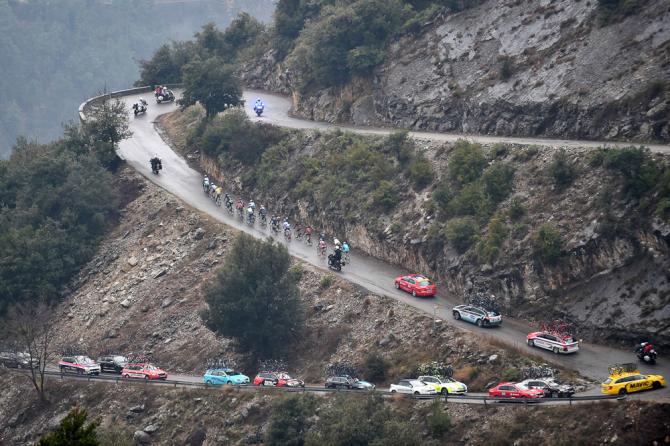
4. Monte Zoncolan: Length 10.1km/Average Gradient 11.9%
A lot has happened and changed in Chris Froome's life since 2010 but there is one thing that has remained unchanged and possibly unchangeable: his firm conviction that he never wishes to return to Monte Zoncolan, the scene of an excruciating private ordeal in the 2010 Giro d'Italia.
That day Froome trailed home 22 minutes behind the stage winner and soon-to-be-crowned Giro champion Ivan Basso. If there was a silver lining, it was that Froome had plenty of time to take in the view from Grand Tour racing's most notorious mountain. Or to decide - while staring at his stem - that once was more than enough.
Froome says: "How many minutes did you say I lost in 2010? Twenty-two? Well, I was carrying a bit of a knee injury, if I'm not mistaken…. No, seriously, this was not a climb that I enjoyed. What I said about the Angliru also applies to this; it's really on the limit of what we should be riding, and I have no particular desire to go back."
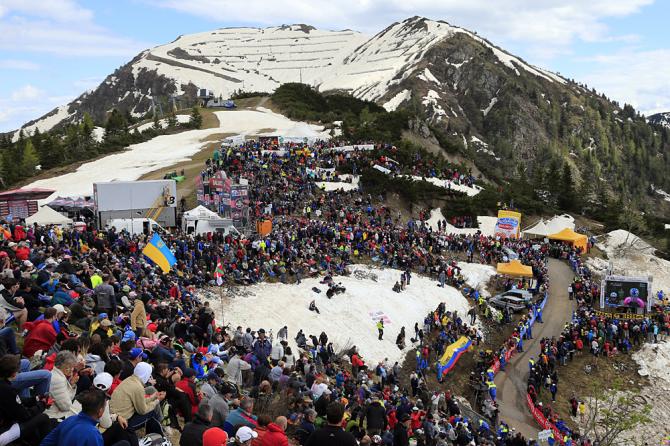
5. La Planche des Belles Filles: Length 5.9km/Average Gradient 8.5%
When, one day in October 2011, the thousand or so residents of Plancher-les-Mines saw three bulldozers trundle through their main street and up the old D16e, more than one assumed that the day had finally come for the ailing ski resort perched above the village to be put out of business and out of its misery.
Many would soon come to wish they had been right. For, without warning or prior notification, what the earthmovers had actually come to do was rip out enough trees and earth to create space for three new carparks and several hundred metres more of tarmac road.
Local government would later claim they had not publicised the news of the Tour de France's imminent arrival at the Planche des Belles Filles and its implications "because the route had to be kept secret". Adamant that they'd been blindsided, environmentalists responded by creating a protest group, "Les Indignés de la Planche". Four years and two Tour de France stage finishes later, and with a third on the way, the "Indignés" have either been becalmed or admitted defeat - not that the promised economic benefits of the Grande Boucle's visits have yet justified the means according to reports in the local press.
Chris Froome certainly found the devilishly steep, pleasantly tree-lined ascent to his liking in 2012. Curiously, Froome took his first Tour stage victory on a climb of identical length to the one where he'd first won as a professional - Peña Cabarga. Unlike Vincenzo Nibali in 2014, when Froome first won on La Planche des Belles Filles, he didn't go on to win the yellow jersey in Paris, but he'll get another chance to match the Italian in the 2017 Tour.
Froome says: "Obviously this is a special climb for me, as it's where I won my first Tour de France stage. It's also just a lovely spot and quite different from everything else that I've chosen in terms of landscape. The forest either side of the road is really thick and green, which makes a nice, literally refreshing change from some of the other hills on my list."
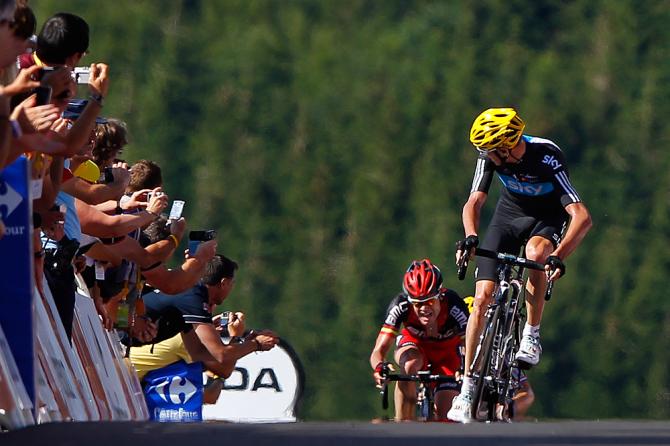
6. Mont Ventoux: Length 21.5km/Average Gradient 7.2%
It's ironic that, a few years from now, Chris Froome will call time on one of the most decorated cycling careers in history, and yet be remembered above all else for an ungainly jog on the slopes of Mont Ventoux, where he'd won in yellow three years earlier.
Unfortunately, at times, truth can be stranger than fiction, or indeed logic. By crashing into a television motorbike on stage 12 of the 2016 Tour de France and carrying on regardless, à pied, Froome not only provided the emblematic image of his reign but also enriched the legend of his sport's most mystical mountain. He and the race jury's decision to 'neutralise' the stage from the point of Froome's incident also sparked questions that cut to the very essence of what professional cycling is and what it ought to be.
In an otherwise unduly harsh critique of Froome's third Tour de France victory, L'Équipe's Philippe Brunel did make a fascinating point: that Froome's misfortune had not been so very different from Luis Ocaña's crash in a storm in 1971, the punch to Eddy Merckx's stomach by a spectator on the Puy-de-Dôme in 1975, or Giuseppe Guerini's collision with a camera-wielding fan at Alpe d'Huez in 1999.
These were all twists of fate for which the officialdom of the day made no concession, or as Brunel wrote, "imponderables to which the Tour is fatally exposed in the mountains, in the middle of a fervid crowd."
Thus, Froome's misfortune had reaffirmed the symbiosis of man and the elements, the earth and the mountains - or rather, it should have done. Brunel went on to quote his friend and fellow Tour historian, Thierry Cazeneuve, who a few days earlier had told him, "To understand the Tour, drive up the Izoard one day in winter, turn the engine off and just listen. Hear the ice thawing, the pebbles rolling and then nothing - just immense silence that the Tour fills with its noise in the summer."
Herein lay proof, said Brunel, that "the Tour is an open-air theatre, playing out in a heedless natural world, both beautiful and cruel, grandiose and threatening, where anything can happen."
Anything, including the bizarre spectacle of Bastille Day of 2016, when Chris Froome stormed the Ventoux and all our preconceptions of cycling's greatest race.
Froome says: "I didn't mention it at the time but I really enjoy running – just not in the middle of a Tour stage! I've actually done a bit to keep in shape this winter. I love that you can get a really decent work-out in an hour, and that it can feel like doing five or six hours on the bike. I'm not sure if I was or could be a good long-distance runner; I did a bit growing up in Kenya but you can imagine how stiff the competition was there. Let's just say that I was pretty far out of the back..."
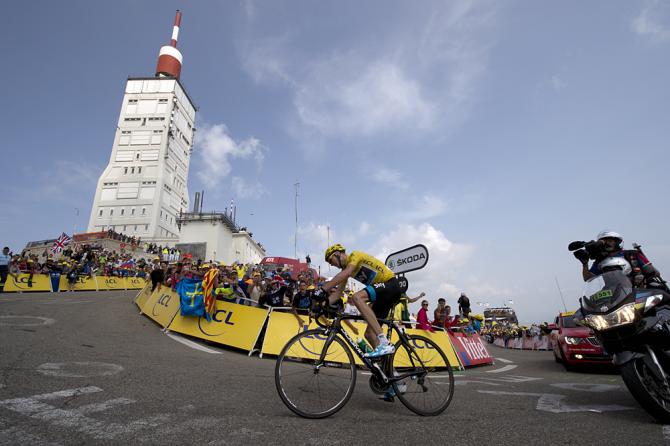
7. Munro Drive: Length 0.9km/Average Gradient 5%
A shade under one kilometre long and with an average gradient of barely 5 per cent, Munro Drive is the pygmy among giants in Chris Froome's roll-call of favourite climbs.
It wouldn't necessarily come as a big surprise that, in his teens, a future Tour de France winner learned to fly on a summit 1,768m above sea level. Slightly more remarkable - and perhaps disappointing - is that the starting altitude for this "nursery slope," Munro Drive, was 1,727m, a mere 41m below.
The road was built in the days of Johannesburg's gold rush, to connect the city with what are now its northern suburbs, over Linksfield Ridge. For Froome it satisfied a different need - that urge to end training rides with one last hit before he rolled back to his boarding school, St John's College or, later, his university digs.
Froome says: "This was one of my first 'favourite' climbs. It's close to my old school and university, and I would always do it on the way home from training rides. Now when I go back, it almost makes me laugh; it's only about a kilometre long and I could possibly do it in the big ring. Back then, though, it seemed like this mythical beast. It even had a switchback, which made it like a proper Tour de France climb in my eyes. This was one of the first places where I had a sense that I was actually pretty good at riding uphill. I certainly used to dread it less than some of my riding partners."
8. Peña Cabarga: Length 6km/Average Gradient 9.4%
Having just celebrated his first birthday, Chris Froome's son is currently too young for bedtime stories about his old man's exploits aboard his Pinarello. But before too long young Kellan will hear about one of the most remarkable cycling careers of modern times - and his father has already said that the tale begins at Peña Cabarga.
It's extraordinary that Froome's victory on this short, steep Cantabrian ascent in the 2011 Vuelta a España was his very first as a professional. It was also a result that confirmed Froome's astonishing transformation from Team Sky misfit on the eve of the race to emerging Grand Tour galáctico three weeks later.
Froome's triumph at the end of a slugfest with Juan José Cobo left him 0:13 adrift of the Spaniard overall. That was also exactly how the race would end four days later in Madrid – with Cobo victorious, Froome an agonised runner-up and Team Sky rushing to renew his contract.
After debuting in the Vuelta in 1979, Peña Cabarga didn't return until 2010. It has now appeared in four of the last six, including the 2016 race. Froome is rarely given to nostalgia, yet even he seemed misty-eyed about returning to it last year.
"In that final kilometre in 2011, I forgot about the Vuelta, my contract, money. It was just two men racing against each other and a mountain. I've never felt such an intense feeling," he told journalists.
The day may not have had quite the same special flavour but Froome did produce a repeat performance. Once again, though, he'd duelled with and narrowly beaten the man who would reverse the scoreline in Madrid, in this case Nairo Quintana.
Critics of Vuelta director Javier Guillén claim that Peña Cabarga typifies the worst of the race's excesses, its addiction to "cuestas de cabras," literally slopes for goats. For Chris Froome, it is where a fairytale began. As Froome Jnr will discover one day.
Froome says: "It's a bit of a coincidence that I've named two climbs of identical length, Peña Cabarga and La Planche des Belles Filles. On the other hand, it also makes sense, knowing the kind of interval training I do, what my body reacts best to, and the kind of climb I also enjoy. There was a bit of debate at this year's Vuelta, in particular, about whether they had gone too far with the short, really steep climbs but I didn't see anything unreasonable."

9. Mirador de Masca: Length 4.2km/Average Gradient 10.3%
The Mirador de Masca is in many respects to Tenerife what Sa Calobra is to Team Sky's Mediterranean training paradise, Majorca. Like the latter, this climb spirals to a breathtaking plateau and vantage point over the ocean. Unlike on Sa Calobra, however, there is scant chance to appreciate the vista.
Likened to the Alto de l'Angliru by the leading Spanish authority on such matters, the altimetrias.net website, this 4.2km, 10.3 per cent brute hoists itself in long and completely exposed ramps up the western flank of the Teide volcano. In the kilometre before the Mirador, the gradient never dips below 11 per cent.
Centuries ago, legend has it, pirates used to hoard their treasure in troves in Masca, at the foot of the climb. Riches plundered from the Americas by the most famous local bandit, nicknamed "Cabeza de Perro" or "Dog's Head," are supposedly still buried in caves somewhere close to Masca's modern marina.
Froome says: "In terms of landscape and views, I can see why they compare this to Sa Calobra. Masca is maybe even more beautiful, in fact. I can't imagine there are many places on Earth with more amazing vistas, out over the Atlantic and islands of La Palma and La Gomera. As a climb it's shorter but much steeper than Sa Calobra. Like most of the climbs in Tenerife, it's also very exposed to the sun, which is useful for getting used to the kind of heat we encounter at the Tour."
10. Mirador de Chirche: Length 3.5km/Average Gradient 11.6%
The Mirador de Chirche is another preposterously steep Tenerifian climb, unfamiliar to most fans but all too well known and detested by pro riders who train on the island. If anything, the average grade underplays the difficulty of the challenge, particularly with the last two kilometres featuring multiple ramps in excess of 20 per cent.
As is the case for most climbs on the island, the absence of trees means no shelter from the blazing sun in most months. This helps make Chirche by most estimates the hardest short climb in the Canary Islands and easily the most brutal and foolhardy way to begin an ascent of the Teide. It joins the T38 that sets out from Los Gigantes.
Froome says: "Tim Kerrison, our coach, particularly enjoys getting new signings to do this climb as a kind of initiation ritual. He'll say we're going to do a first lap "just to have a look," but it's almost impossible to get to the top without going over your threshold. You'll be crawling up at about 40rpm and 4kph! It's absolutely ridiculous. Then we'll finally reach the top and Tim will tell us to go again, but doing a real effort this time."